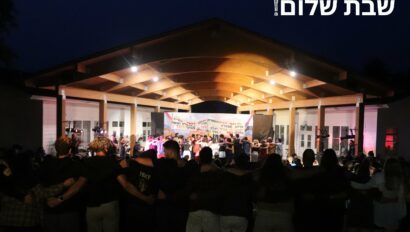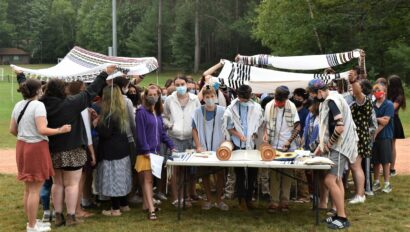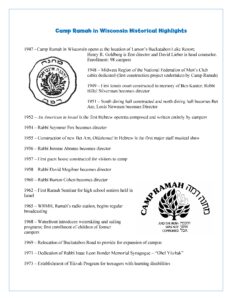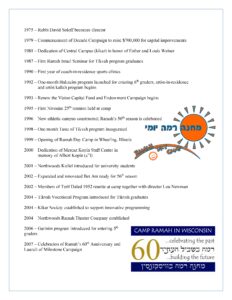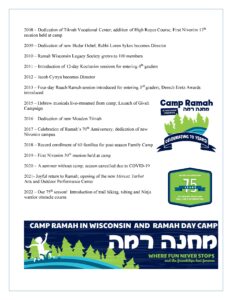Reflections on the Seder
by Jacob Cytryn, Director
One of the giants of early Zionism, Achad Ha’am, laid bare his bona fides as a protector and supporter of cultural Judaism by famously proclaiming: “More than the Jews have kept Shabbat; Shabbat has kept the Jews.” The implication is that the legalistic observance of Shabbat, which likely has waxed and waned in every generation of Jewish history, is far less a crucial component of our rich cultural heritage and religious/ethnic longevity than the existence of Shabbat as a magnetic pillar shaping the rhythms of life and the Jewish worldview.
For those of you who, if for no other reason, haven’t been in a supermarket within a fifteen mile radius of a significant Jewish community in the last month, this Friday evening we begin the celebration of Passover. And though the Seder was not the object of one of Achad Ha’am’s bons mots, it could have been. If our contemporary Jewish reality is any indication, attending some version of a Passover Seder, in addition to lighting Chanukkah candles, a connection to social justice values, and a few other practices and beliefs, is one of the things that ties nearly all Jews together. And, as we know, each Seder is different. Some will take place this week or next, others on the traditional dates of Friday and Saturday night. Some will be freedom Seders, committed to the universal narrative of overcoming oppression and achieving freedom through hope. Some will find participants reading every word in the Haggadah; some will find contemporary resonances and pun-ny song adaptations at the center; others will rely on both. Many will involve gefilte fish and matzoh balls. Some will focus on the kids, or grandkids, or great-grandkids. Some will be communal. Some will be intellectual, or cultural, or spiritual, or atheistic, or Zionistic, or ecumenical, or all of the above.
Based on this, I’d suggest: Just as the Jews have shaped their Seders, the Seder has shaped us as Jews.
The Seder is the quintessential Jewish ritual: its language and actions are a map to the core values of our religion and culture. The Seder as described in the Mishnah (c. 2nd century CE) is likely a version of the Greco-Roman symposium, an evening of food and philosophical conversation geared, as Plato demonstrates, towards understanding Truth. Our Seder is interested in everything but Truth. We mine a national narrative of slavery in Egypt and peel away at successive layers of interpretation, burrowing ourselves into each one and creating something new. We insist on seeing ourselves in the story at every step along the way, routinely using the first person: “On all other nights we eat …” “we and our children and grandchildren would still be slaves …” “Now we are slaves; next year may we be free.” “With a strong hand, God brought us out of Egypt.” “The Holy One, Blessed be God, saves us from their hand.” “God heard our voice and saw our suffering.”
Each of these uses of the first person are nods to perhaps the most important dictate of the Haggadah: “In every generation a human being must see themselves as if they themselves had left Egypt.” I do not mean to hyperbolize when I say that this sentence is undoubtedly the most important in all of our tradition in laying out the purpose, methods, and ultimate goals of Jewish education.
At this time of year as each family attempts to create the Seder that works for them, as everyone tries to one-up themselves from last year, as leaders of Seders scour the internet for new bingo cards, song parodies, moving readings from the alphabet soup of Jewish organizations, we often fail to realize that our constant innovation is the point, that in our diversity and striving to say something unique we are doing the Haggadah’s bidding. We are meant to find ourselves by moving into the Haggadah’s web of word and action and then by escaping it. By design, shaping our Seder is being shaped by the Seder.
The educational experience we provide for our campers and staff is one that, on good days, possesses the potential of the Passover Seder, because the Seder is its model. We go to camp to make friends, to deepen those friendships, and to enjoy summer. And Camp Ramah in Wisconsin strives for something greater, for equipping our alumni with the literacy to make our Jewish heritage their own, to innovate and renovate for their generation and for ours. As at the Seder, experience is not a value in and of itself; experience is a means to deepening connection and fostering ownership and growth. As you know if you have ever spent any time with camp friends listening to them tell (and retell, and retell) their stories, the truth-value of those stories has long ago receded into memory. The mining and re-mining of those influential narratives engenders ownership, self-reflection, and a sense of autobiographical meaning. This is cultural transmission, Seder-style and Ramah-style.
This Passover, I hope your bingo card is as full as your wine glass; your fluency reading the Four Questions in Klingon (for real – this book has it! – but, alas, not yet Dothraki or Camp Hebrew) matches that of the soup; your search for the next new awesome Seder thing as impassioned as the eventual Afikomen finder’s search of their own. I hope the Seder does what it’s meant to do, pulling you deeper into your heritage and thrusting you out into the world as a more aware resident of God’s universe, buoyed by hope and the promise of tomorrow even at the darkest times.
While the Seders do mark an official turn towards the home stretch in the ten-month build-up towards camp, I also hope that this year you tease out and appreciate how the Seder encapsulates what we do at Ramah. Because at the end of the day, both the Seder and Ramah in Wisconsin can be described in the same way: where fun, friends, and lots and lots of food build Jewish lives.
A Pesach of renewal and exuberance to all,
Jacob
